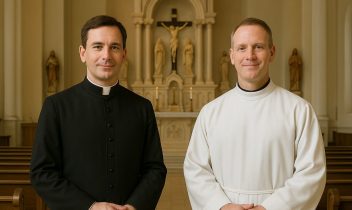No products in the cart.
Return To Shop
When it comes to civic attire for clergy, the choices and expectations may seem complex, but the right attire holds profound meaning. Civic attire for clergy isn’t just about looking respectable it’s about conveying the dignity of the clergy office, honoring religious traditions, and adhering to the expectations of the community. Whether you’re a clergy member seeking guidance on clergy civic clothes or someone curious about its significance, this guide provides a comprehensive overview.
In this guide, we’ll explore:
- What civic attire for clergy is and why it matters.
- The key pieces of clergy civic attire.
- How to choose the right attire for public and ceremonial events.
- Tips for wearing clergy attire with confidence.
Let’s dive in and uncover the essence of civic apparel for clergy.
What is Civic Attire for Clergy?
Civic attire for clergy refers to the formal clothing worn by clergy members during public-facing roles or events that aren’t strictly religious services. Unlike liturgical vestments, which are reserved for worship, civic clothes is designed for events such as community meetings, funerals, weddings, public ceremonies, or even social gatherings.
This attire is more subtle in design compared to liturgical vestments, yet it carries deep symbolic meaning. These garments reflect the tradition of modesty and reverence, while also conveying authority and professionalism.
The primary purpose of attire is to maintain a visible connection to a clergy member’s religious identity while participating in secular or public activities. This attire embodies dignity, respect, and the ongoing commitment to service.
Key Pieces of Clergy Civic Attire
Clergy Shirt and Clerical Collar
The clergy shirt is the foundation of civic attire for clergy. Typically made from cotton or polyester, it pairs with a clerical collar often white or black that symbolizes the clergy’s role within the church. This recognizable feature highlights the commitment to faith and duty.
Clerical Suits and Blazers
For formal events like weddings or funerals, a clergy suit or blazer is an essential piece of clergy attire for ministers. Black is the most common color, but other options are available, depending on denominational traditions or personal preferences. Adding a matching tie or ascot can elevate the look further.
Cassocks
Although cassocks are primarily associated with liturgical services, they can occasionally feature in clergy attire, especially for higher-ranking clergy members. A cassock’s long, flowing design signifies respect and humility, making it appropriate for formal public occasions.
Chimeres and Surplices
Chimeres sleeveless garments worn over cassocks and surplices white tunics are more commonly linked to liturgical attire but can also be worn as part of cleric attire or other formal clergy dress. These pieces emphasize rank and role during significant public ceremonies.
How to Choose the Right clergy attire
Choosing the right civic attire for ministers depends on several factors:
- Consider the Occasion
Formal events, such as weddings and funerals, often call for a clergy suit or cassock. More casual settings may only require a simple clergy shirt and clerical collar. - Know the Liturgical Colors and Seasons
Certain occasions or liturgical seasons may influence your clothing choices. For example, wearing purple during Advent or Lent aligns with religious traditions. - Ensure Comfort and Fit
While symbolic, civic attire should also be practical. Choose well-fitted garments that allow for ease of movement and long periods of wear. - Add Accessories Thoughtfully
Accessories like a clergy cross, stole, or lapel pin can add elegance. These should reflect your personality while maintaining the modesty expected of clergy.
Wearing Your Clergy Civic Attire with Confidence
Wearing civic attire for clergy is about more than just the garments; it’s about how you carry yourself. Confidence enhances the respect and reverence associated with your role.
- Stand Tall: Maintain good posture to exude confidence and purpose.
- Be Mindful of Modesty: Avoid flashy or extravagant choices. Simplicity reflects the humility central to clergy roles.
- Pay Attention to Detail: Ensure garments are clean and well-pressed. Small details make a big impact on your professional appearance.
Civic Attire Meaning in Context
The meaning of civic attire extends beyond clothing. It symbolizes a bridge between sacred duties and public engagement, helping clergy represent their faith with dignity and professionalism in secular settings.
Conclusion
In conclusion, civic attire for clergy is not just a uniform; it’s a meaningful expression of faith, respect, and service. Whether attending public events, leading ceremonies, or fulfilling community roles, the right attire ensures you represent your office and tradition with dignity.
If you’re seeking high-quality clerical attire for ministers, explore our collection at Holy Clergy. From clergy shirts to suits and accessories, we offer garments that blend tradition and style, helping you serve with confidence and grace.
Frequently Asked Questions (FAQs)
- What is the difference between liturgical vestments and civic attire for clergy?
Liturgical vestments are worn during religious services, while civic attire is worn for public-facing roles like weddings or funerals. - Can clergy wear cassocks for civic events?
Yes, cassocks can be part of clergy civic attire, particularly for formal events or higher-ranking clergy. - What is COGIC civic attire?
COGIC civic attire typically includes clerical shirts, cassocks, and accessories unique to the Church of God in Christ traditions, reflecting their emphasis on dignity and modesty. - How should clergy civic attire fit?
It should be well-fitted but comfortable, allowing ease of movement during extended wear. - Are accessories necessary for civic attire?
Accessories like stoles or lapel pins are optional but can enhance the outfit’s elegance and reflect the occasion.








Recent Comments